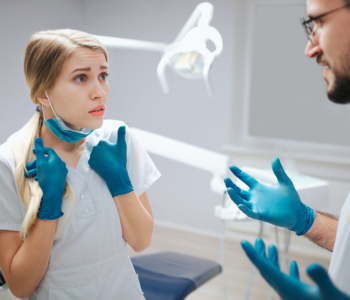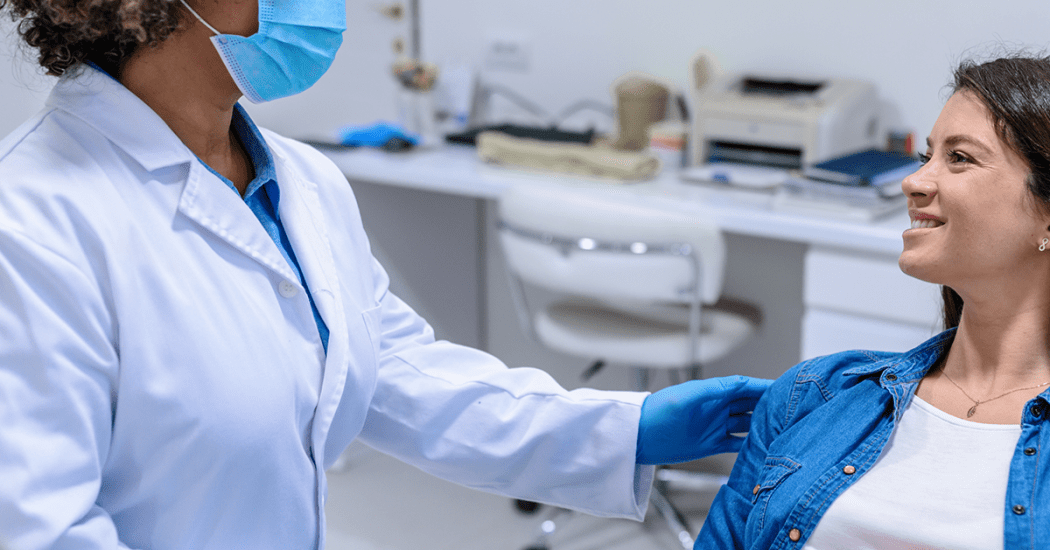
Gestión de la práctica
Los conflictos en el lugar de trabajo son tóxicos para el equipo, los pacientes y la práctica. Descubre cómo mantener la paz en tu oficina.
11 minutos de lectura
In the context of oral health and dental treatment, pregnancy presents a number of challenges. The dental practitioner must plan treatment with the wellbeing of two patients in mind — one undergoing a series of complex physiological, hormonal and metabolic changes, and the other at the most vulnerable stage of their development — all the while alleviating the expectant mother’s natural concern for her offspring.
This article aims to summarise the key changes in the pregnant patient as they relate to oral and dental care, outline best-practice guidelines for treating pregnant women, and address common concerns about the safety of dental care during pregnancy.

In the context of oral health and dental treatment, pregnancy presents a number of challenges. The dental practitioner must plan treatment with the wellbeing of two patients in mind — one undergoing a series of complex physiological, hormonal and metabolic changes, and the other at the most vulnerable stage of their development — all the while alleviating the expectant mother’s natural concern for her offspring.
This article aims to summarise the key changes in the pregnant patient as they relate to oral and dental care, outline best-practice guidelines for treating pregnant women, and address common concerns about the safety of dental care during pregnancy.
The gingival tissue features receptors sensitive to oestrogen and progesterone, key pregnancy hormones that begin to rise rapidly after conception. Oestrogen promotes vascular proliferation and permeability in the gingival tissue, while progesterone’s immunosuppressant effect subdues the acute inflammatory reaction to pathogenic bacteria. Additionally, the composition of the oral microbiome can change dramatically during pregnancy, creating a more favourable environment for the growth of such bacteria.
All play a role in the high prevalence of periodontal disease in pregnant women, estimated to be at least 40%. Research indicates that periodontitis is associated with adverse pregnancy outcomes, including preterm birth, low birthweight, pre-eclampsia and gestational diabetes (a condition with a bi-directional effect).
Some women experience reduced salivary flow during pregnancy, with common causes including gestational diabetes and dehydration. Expectant mothers are also more prone to mouth breathing — another cause of dry mouth — for reasons that include:
Pregnant women are at greater risk of developing dental caries. The altered composition of the oral microbiome also favours the growth of cariogenic bacteria, while xerostomia limits the protective buffering and antimicrobial actions of saliva. If the expectant mother finds herself craving foods rich in sugar and fermentable carbohydrates, her risk can increase even further.
According to the Centers for Disease Control and Prevention (CDC), women with high levels of cariogenic bacteria can transmit them to their infants, increasing the risk of childhood caries.
“Morning sickness” affects as many as 90% of pregnancies. It typically resolves after the first trimester, but a small subset of women experience a severe and persistent form known as hyperemesis gravidarum (HG). Some women also experience acid reflux due to relaxation of the GI tract muscles, abdominal pressure from the growing uterus, and dietary changes.
Frequent exposure to high levels of stomach acid lowers the pH of the oral cavity, demineralises enamel, and facilitates enamel erosion. Weakened enamel is also vulnerable to abrasion from toothbrushing — something the woman may instinctively want to do after vomiting.
Significant changes occur in virtually every organ system during pregnancy. The pharmacokinetic properties of drugs should therefore be expected to change in various ways. For example, increases in total body water, blood volume and capillary pressure increase the volume of distribution of hydrophilic drugs, requiring higher doses to obtain appropriate plasma concentrations. Meanwhile, lower serum albumin levels can decrease protein binding and increase free levels of many drugs, requiring lower doses.
It is also assumed that all drugs can cross the placental barrier and affect the foetus, warranting conservative use of drug therapies in pregnant patients. However, this must be weighed against the risk to the mother, who may suffer adverse consequences from untreated pain or infection.
Guidelines vary by region, but the following provides an outline of the U.S. Food and Drug Administration’s (FDA) widely shared stance on commonly used drugs in dentistry.
Amide-type local anaesthetics are generally considered safe for use during pregnancy.
Lignocaine/lidocaine (Septodont Lignospan Special) and articaine (Septodont Septanest 1:200,000) are the local anaesthetics of choice for pregnant patients in both the US and UK. They can be used to achieve profound anaesthesia with low concentrations of epinephrine and have high protein binding rates (articaine is highest), minimising the risk of foetal toxicity. Prilocaine, mepivacaine (Septodont Scandonest 3% Plain), and bupivacaine are also considered acceptable.
While epinephrine dosage should be kept as low as possible, epinephrine can be beneficial in reducing systemic uptake of anaesthetic agents and decreasing the risk of toxicity. However, “plain” vasoconstrictor-free formulas like Scandonest 3% Plain can be used if preferred for short procedures, or when epinephrine is contraindicated.
Patients of childbearing age should routinely be encouraged to attend to all dental needs before planning a pregnancy where possible. It should be explained that their oral health plays an important role in the health of their baby, but options for addressing certain conditions may be limited once a pregnancy is underway.
In addition to standard daily oral hygiene, educate the patient on protecting against acid erosion — an often lesser-known risk in pregnancy. Patients should be advised to rinse with a solution of baking soda and water after vomiting, and to wait before brushing their teeth. In cases of severe vomiting, as in hyperemesis gravidarum, prescription of a high-fluoride dentifrice or topical application of a high-fluoride varnish may be necessary for added protection, and is considered to be safe for mother and baby.
There is a pervasive concern among pregnant women about the safety of dental x-rays during pregnancy. The International Atomic Energy Agency (IAEA) states that, when a lead apron and thyroid shield are used, the low level of radiation from a dental x-ray poses low risk to the foetus. That said, the risk is still present, and the IAEA takes the position that every woman of reproductive age should be treated as pregnant until confirmed otherwise. They strongly advise practitioners to display risk information in patient areas and to routinely ask about possible pregnancy.
Pregnant women with lower blood pressure are at greater risk of orthostatic hypotension, in which sudden or quick changes in posture can induce a rapid drop in blood pressure and possible syncope. This warrants extra caution when moving the patient, e.g. lowering or raising the dental chair.
The dental practitioner must also consider the size of the foetus. A heavy foetus, or multiples, can compress the vena cava and aorta in the supine position, leading to shortness of breath, a drop in blood pressure, bradycardia, and/or syncope. To reduce this risk, the patient can be positioned on her left side with a pillow placed under her hip.
The oral health of the mother can directly impact the health of her baby, so dental practitioners should not be discouraged from providing the necessary care to the pregnant patient. While not without challenges, most treatment goals can be achieved with a little extra consideration and careful planning.
El sitio al que está a punto de acceder está restringido a profesionales sanitarios. Al hacer clic en Aceptar, usted certifica que es un profesional de la salud.